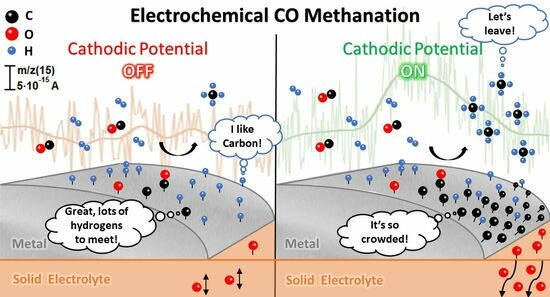CO2 Electrochemical Reduction and Conversion
A topical collection in C (ISSN 2311-5629). This collection belongs to the section "CO2 Utilization and Conversion".
Submission Status: Closed (20 October 2025) | Viewed by 4724Editors
Interests: chemical engineering; green chemistry; supercritical fluid (CO2) technology; catalysis, alternative solvents; carbon dioxide utilization; biomass-derived platform chemicals
Special Issues, Collections and Topics in MDPI journals
Interests: green chemistry, in particular in CO2 utilization; functional materials; energy storage systems; electrochemistry; ionic liquid technologies and sustainable separations processes including supercritical fluid technologies
Topical Collection Information
Dear Colleagues,
Solutions to curb the constantly rising concentration of carbon dioxide in the atmosphere, already in excess of 400 ppm, are urgently needed. The electrochemical reduction of CO2, including photo-electrochemical reduction, is considered one among many potentially disruptive CO2 conversion technologies. Carbon dioxide is an abundant, non-flammable and attractive raw material. Beyond the formation of fuels, electrocatalytic processes can sequester carbon dioxide in a wide spectrum of chemical commodities, turning a chemical industry currently based on fossil energy into a renewable and circular industry. The electrochemical conversion of carbon dioxide has been studied for more than 100 years. However, a constantly increasing number of publications on electrochemical reactions involving CO2 highlights the renewed interest of the scientific community in such technologies.
The main objective of this section of C–Journal of Carbon Research is to compile relevant and recent discoveries in the area of the valorisation of carbon dioxide through electrochemical processes. Some key, but not exclusive, topics for this collection are:
- Design and performance evaluation of new catalytic systems and electrodes;
- Mechanistic investigations of reactions;
- Computer-based studies to aid the design of more efficient processes;
- Construction of innovative or improved reactors and systems paving the way to commercialization;
- Scale-up studies;
- Techno-economical assessment and life cycle analysis.
We invite authors to submit comprehensive research articles, reviews, communications, or letters representing both experimental and theoretical studies on the electrochemical conversion of carbon dioxide.
Dr. Małgorzata E. Zakrzewska
Dr. Ana S. Reis-Machado,
Guest Editors
Manuscript Submission Information
Manuscripts should be submitted online at www.mdpi.com by registering and logging in to this website. Once you are registered, click here to go to the submission form. Manuscripts can be submitted until the deadline. All submissions that pass pre-check are peer-reviewed. Accepted papers will be published continuously in the journal (as soon as accepted) and will be listed together on the collection website. Research articles, review articles as well as short communications are invited. For planned papers, a title and short abstract (about 250 words) can be sent to the Editorial Office for assessment.
Submitted manuscripts should not have been published previously, nor be under consideration for publication elsewhere (except conference proceedings papers). All manuscripts are thoroughly refereed through a single-blind peer-review process. A guide for authors and other relevant information for submission of manuscripts is available on the Instructions for Authors page. C is an international peer-reviewed open access quarterly journal published by MDPI.
Please visit the Instructions for Authors page before submitting a manuscript. The Article Processing Charge (APC) for publication in this open access journal is 1600 CHF (Swiss Francs). Submitted papers should be well formatted and use good English. Authors may use MDPI's English editing service prior to publication or during author revisions.
Keywords
- Carbon dioxide utilisation
- Carbon dioxide conversion
- (Photo)-Electrochemical CO2 reduction
- (Photo)-Electrocatalysts
- Electrode
- Electrolyte
- Modelling
- Upscaling
- Techno-economic assessment
- Life cycle analysis







